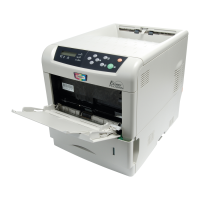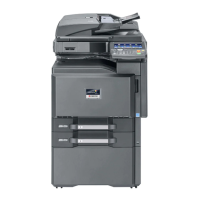COMMAND CENTER Pages
Advanced > Security > Secure Protocols
You can encrypt communication between a PC and this machine using SSL
encryption. For the changes made in the following to take effect, restart the
machine as described in Basic > Defaults > Reset on page 3-6.
SSL
Specifies whether or not to use the SSL protocol.
Serverside Settings
• Effective Encryption
Selects the encryption algorithm(s) to be used.
• HTTP Security
Specifies the security level.
• Secure Only (HTTPS)
Encrypts all communication. Access is possible only with a URL that
begins with "https://." Access attempts using an ordinary http:// URL are
automatically redirected to the URL where "http://" is replaced with
"https://."
• Not Secure (HTTPS & HTTP)
Enables access for both encrypted and unencrypted communication.
Access is possible with https:// and http:// URLs. The former URL
establishes encrypted communication and the latter establishes normal
communication.
IPP Security
Specifies the security level.
• Secure Only (IPP over SSL)
Encrypts all communications.
• Not Secure (IPP over SSL&IPP)
Enables access for both encrypted and unencrypted communications.
Clientside Settings
• Effective Encryption
Allow you to specify the encryption algorithm for data communication. You
can use more than one algorithms at a time.
• Certificate Verification
When set On, verify the expiration of the server certificate at communication.
If found expired, communication will fail. When set Off, the expiration will not
be verified.
Note: When the SSL is set to On and HTTP Security is set to Secure
(HTTPS), the document boxes cannot be accessed by the TWAIN driver.
Advanced > Security > IEEE802.1x
The IEEE802.1x security protocol allows the user to login to the secured
networks based on the client certificates.
IEEE802.1x
Specifies whether or not to use the IEEE802.1x protocol.
User Guide
3-51

